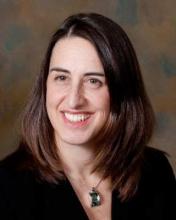What’s in a name?
Since its early inception, the Home Care NetWork was created to share expertise at home. Initially, this was uncommon and largely in survivors of the polio epidemics. Today, home-based ventilation is given for a wide variety of diseases, including neuromuscular diseases, chronic lung diseases, central hypoventilation syndromes, spinal cord injuries, and many others. The number of individuals has been growing exponentially. Even over the last 10 to 20 years, this growth has continued both domestically and internationally. As just one example, the largest pediatric home ventilation program in Canada saw an increase from two children in 1991 to 156 in 2011 (Amin et al. Pediatr Pulmonol. 2014;49:816). At the same time, support is being increasingly provided with noninvasive ventilation, including up to 24-hour ventilator requirements, and new equipment and skills are being developed on a regular basis to facilitate this support.
There are also many challenges that accompany this growing population. One priority our steering committee has repeatedly heard is that patients with progressive neuromuscular diseases, especially in adulthood, are having difficulties finding clinicians to provide appropriate noninvasive ventilation. And even when they do and are well cared for, they risk receiving a tracheostomy when they are admitted to hospitals after admissions for acute decompensations, despite experience and literature suggesting this is often avoidable.
We have also come to realize that CHEST members seeking out resources in this area have not always known what the Home Care NetWork did. As such, to continue to provide and improve the support to the CHEST community, the Home Care NetWork has been renamed the Home-Based Mechanical Ventilation and Neuromuscular Disease NetWork.
Changes to our practice climate
Health-care providers continue to hear reports on the initiatives underway to change the cost curve and increase the value of health care. CMS continues its efforts with meaningful use, PQRS, and value-based payment modifiers. Eligible providers’ performance in 2015 is being assessed for payment adjustments to be phased in yearly from large groups in 2015 to all providers by 2017. Individual CMS beneficiaries are being assigned to physician groups using stepwise methodology and tax identification numbers of providers to track quality and cost performance.
For years, hospitals have been attuned to the needs to optimize quality and cost performance for populations of CMS patients. Physician groups similarly must now focus on process improvement to align with CMS goals for quality and cost for both inpatient and outpatient care. In doing so, payments to those provider groups from CMS will be adjusted upwards, be held neutral, or adjusted downwards based upon their success.
If you are interested in assisting your colleagues in preparing for changes to our practice climate like those outlined above, we welcome you to join the Practice Operations NetWork. For those interested, please contact networks@chestnet.org, or simply drop in and visit us at CHEST 2015 during our NetWork Featured Lecture – Comparing the Canadian Healthcare Model to the US Model on Tuesday, October 27, in Montreal! We hope to see you there!
Lung transplantation and the quest for donor lungs
With improving survival rates and increasing recognition of quality-of-life benefits, more patients are being referred and listed for lung transplantation. However, each year, patients die while awaiting lung transplantation. Obtaining enough suitable donor lungs remains a challenge.
Potential donor lungs are declined for many reasons, one of which is concerns about quality. The best way to accurately assess and predict a deceased donor lung’s function remains unknown. Although more marginal donors are now considered and used based on the study by Ware and colleagues in 2002 (Lancet. 2002;360[9333]:619), further research is needed to better assess the lungs declined today.
Several strategies are being pursued to expand the availability of donor lungs. There has been expanding recognition that lungs from donors after cardiac death (DCD) can be used successfully. About 15% of US donors are now DCD donors (UNOS Data Trends 2014 from www.unos.org), and these are an important source of potential donor lungs.
Ex vivo lung perfusion (EVLP) techniques may help to further assess and potentially repair donor lungs that might have otherwise been considered marginal or declined. Although not yet approved for widespread use, lungs that may have been declined for concerns about quality may soon have a chance to be further evaluated on EVLP systems.
Ongoing research focusing on improved strategies for procuring lungs from DCD donors and for rehabilitating donor lungs on EVLP should lead to increased availability of donor lungs. Perhaps soon, every listed patient may be offered a chance for a successful lung transplant.


